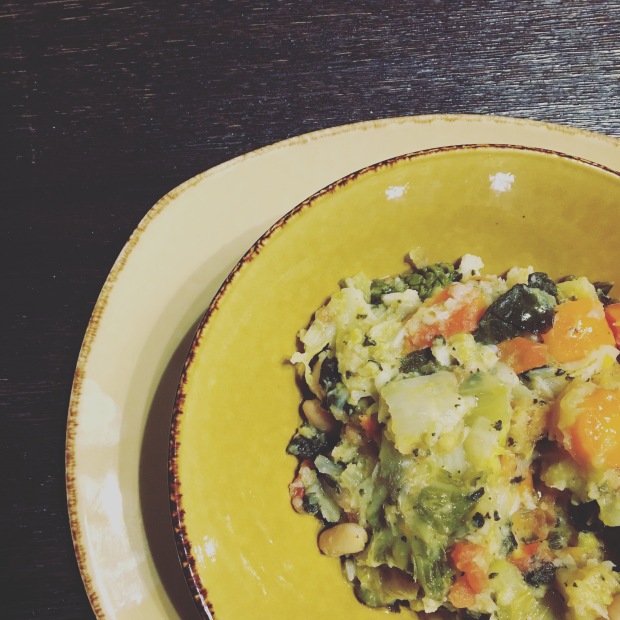With the drop in temperatures here in Florence, I need a soup I can eat for days that will keep me warm and fill me up. Thankful for traditional Tuscan cooking, Ribollita should be just the dish I’m looking for!
Ribollita is a hearty Tuscan soup that is enjoyed during the cold winter months and comes from the ‘cucina povera’ (literally meaning the poor kitchen). It is the making of really good food with simple, cheap, yet high quality, local ingredients. Ribollita directly translated means ‘reboiled’ and that is exactly what happens. This dish comes from ancient times when peasants would prepare a basic vegetable soup; using specifically cannellini beans, kale (variety), and ‘pepolino’ a local fragrant thyme, in large quantities to be eaten over the course of several days, hence reboiled. Stale, saltless, bread was added to the soup in the following days to add consistency to the simple dish.

Florentine Ribollita Recipe:
Approximately 4-6 servings
- 250 grams of savoy cabbage
- 250 grams of kale
- 150 gr of Tuscan stale bread into slices (saltless bread)
- 250 grams of potatoes
- 250 grams of dried cannellini beans (to soak the night before) or canned beans drained
- 200 grams of swiss chard (optional)
- 120 g leeks (optional)
- 60 g celery
- 60 grams of carrots
- 100 grams of extra virgin olive oil
- 1 onion
- 1 garlic clove
- 1 sprig of ‘pepolino’ or thyme
- 750ml – 1 liter vegetable broth (maybe more if necessary)
If using dried beans: Carefully rinse the beans that have soaked overnight or for at least 12 hours in cold water, and put them in a large saucepan. Cover with cold water and cook over low heat for about an hour until they become soft. Otherwise, you can use canned cannellini beans: drain, rinse, and set aside. The leeks should be thinly sliced, carrots and celery finely chopped, onion peeled and chopped, and a clove of garlic cut in half. On low heat the olive oil in a sturdy pot and add the already prepared vegetables (but not the leeks), let the vegetables sauteé until the onion becomes soft and translucent.
In the meantime prepare the other vegetables for cooking: peel the potatoes and cut into cubes, slice the swiss chard (if using) eliminating the center vein. Next, divide the savoy cabbage in half and cut away the hard core, then coarsely chop the leaves. Chop the Kale discarding the tip of the leaves.
Add the leeks to the vegetable mixture in the pot and heat through, stirring from time to time so as to not stick to the bottom. After a few minutes add the remaining vegetables and season with salt and pepper. At this point if you are using dried beans add the cooking liquid to the pot, or if you are using canned beans add about half of the vegetable broth.
Let cook for about 2 hours on low heat, adding a little vegetable broth when needed, until the vegetables are fork tender. Add the beans and cover with a lid; cook for another hour. When the vegetables are overcooked and the beans almost reduced to a cream, remove from heat and transfer to a bowl that is then covered with foil and lid.
Tradition has it that the ribollita is not to be consumed on the day of preparation, but the next one: keep it in the refrigerator for a whole night and the following day transfer it back to the pot used for cooking and add the stale (saltless) bread (even more delicious if toasted) and broth and bring the soup to a boil at low heat for 15 minutes. Serve hot, flavored with a sprig of pepolino or thyme and a swirl of extra virgin olive oil.
(recipe adapted from http://www.tuttogreen.it/ribollita-ricetta-originale-toscana/)
Have you tried Ribollita? We’d love to hear about your experience cooking or eating this traditional dish!
That sounds amazing! Great post 😀 xx
LikeLike